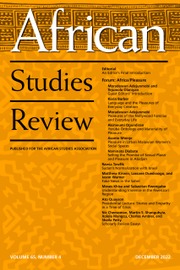Soundtrack to a Coup d’État (2024) is a documentary that delves into the political turmoil following Congo’s independence. Constructed largely from archival footage, the film brings into frame historical figures such as Patrice Lumumba, Andrée Blouin, Mobutu Sese Seko, Nikita Khrushchev, Dag Hammarskjöld, Dwight Eisenhower, Malcolm X, and Fidel Castro. Set against the backdrop of decolonization, the Cold War, and the emergence of the Non-Aligned Movement, their presence traces the contours of the Congo Crisis and its place in a shifting global order.
The wave of African independence movements reshaped power dynamics within the United Nations, amplifying the voices of newly sovereign states. As the Afro-Asian bloc gained momentum, it increasingly challenged the dominance of Western powers whose economic stakes—particularly in resources like uranium—spurred covert and overt military interventions. Soundtrack to a Coup d’État lays bare this geopolitical context, showing how the United States and Belgium, fearing the loss of strategic control, played instrumental roles in destabilizing Congo and orchestrating Lumumba’s assassination.
The film unfolds like a political thriller, brimming with accusations, betrayals, protests, conspiracies, manipulations, intrigue, and a coup. Yet it doesn’t stop at recounting the past—it draws clear lines to the present, implying that the Democratic Republic of Congo’s current realities resemble this moment in history. Historians claim that no number of pages can fully capture the Congo Crisis. So what happens when a filmmaker attempts to tackle it in under three hours? How can one bring coherence to such chaos without lapsing into teleology or presentism? How to provide insight into the events without oversimplifying their complexity? How not to reduce the chaos to a series of relationships between a few key players? How to resist the temptation of moulding history into a neat narrative arc with the subplots of a three-act structure and a dénouement at the end?
Grimonprez’s response is jazz—both in content and in form. Thematically, jazz provides a narrative entry point to unpack the complexity of American involvement in the Congo Crisis. “Jazz ambassadors” like Louis Armstrong were deployed to Congo under the guise of musical tours to promote a positive image of the United States and to spread American values—despite the reality of racial segregation within the United States itself. Unwittingly, these musicians served as cover for CIA operations designed to keep Congo within the Western sphere of influence, even as their music often expressed protest against social injustice. This irony is a key theme in the film. Beyond being a façade for covert CIA operations and Lumumba’s liquidation, jazz also served as a vehicle for resistance—like when Abbey Lincoln and Max Roach stormed a UN Security Council meeting in protest of Lumumba’s assassination. Grimonprez echoes their outcry through the cinematic medium.
But above all, it is formally that jazz offers Grimonprez an aesthetic principle by which to make the story’s complexity both digestible and palpable, and to give archival footage new meaning and fresh readings. Jazz interprets the image. Rather than imposing narrative clarity, the film embraces the dissonance, fragmentation, and improvisation inherent to both jazz and history. While a conventional documentary relies on voice-over to stitch images and sounds into a coherent and guiding narrative, Soundtrack to a Coup d’État allows incoherence and disorientation to guide its cinematic historiography. The result is a cinematic experience that refuses linearity or closure, instead weaving together image and sound in a way that mirrors the chaos and multiplicity of the events themselves. The film rejects a straightforward, univocal, unmediated, chronological relation to history; instead, it embraces a relation that remains opaque, confusing, associative, and emotional. Soundtrack to a Coup d’État invites us to lose ourselves in the labyrinth called “history”—only to find new points of connection again. Through and with jazz, the film drifts across motifs, jumps between timelines, and shifts tone abruptly—evoking the unpredictability, fragmentation, and dissonance of history—its nuances and unexpected turns. History (i.e., narratives of past events), and the visual archive (which contains traces of those events, yet remains open to endless interpretations), are unstable, discontinuous, ambiguous, plural, entangled, irregular, and confusing. In the film, jazz evokes these aspects of history: nervous, urgent, thrilling, and uncertain; bringing them into the here and now. For in the end, the film is a particular kind of historiography: one in which image and sound challenge each other, and where jazz functions as a method of montage—providing audiences a kaleidoscope that allows them to explore multiple facets of history and to perceive analogies with the present. Grimonprez reconstructs history, while deconstructing hegemonic historical narratives.
Why, then, has the film resonated so widely—its poster seemingly too small to contain the laurels it has garnered? Perhaps because, as Grimonprez suggests, this is not a singular story. The structures of power built on betrayal, exploitation, and violence have recurred tragically across the globe. Or, as one student insightfully observed, the film’s power lies in how it encourages viewers to think critically about media, history, and power itself—leaving them with questions that linger well beyond the final frame. In this way, Soundtrack to a Coup d’État is thus not only a historical reconstruction and contextualization of the Congo Crisis, but also an invitation to engage in critical dialogue and to reinterpret today’s political climate and structures of hegemony.


